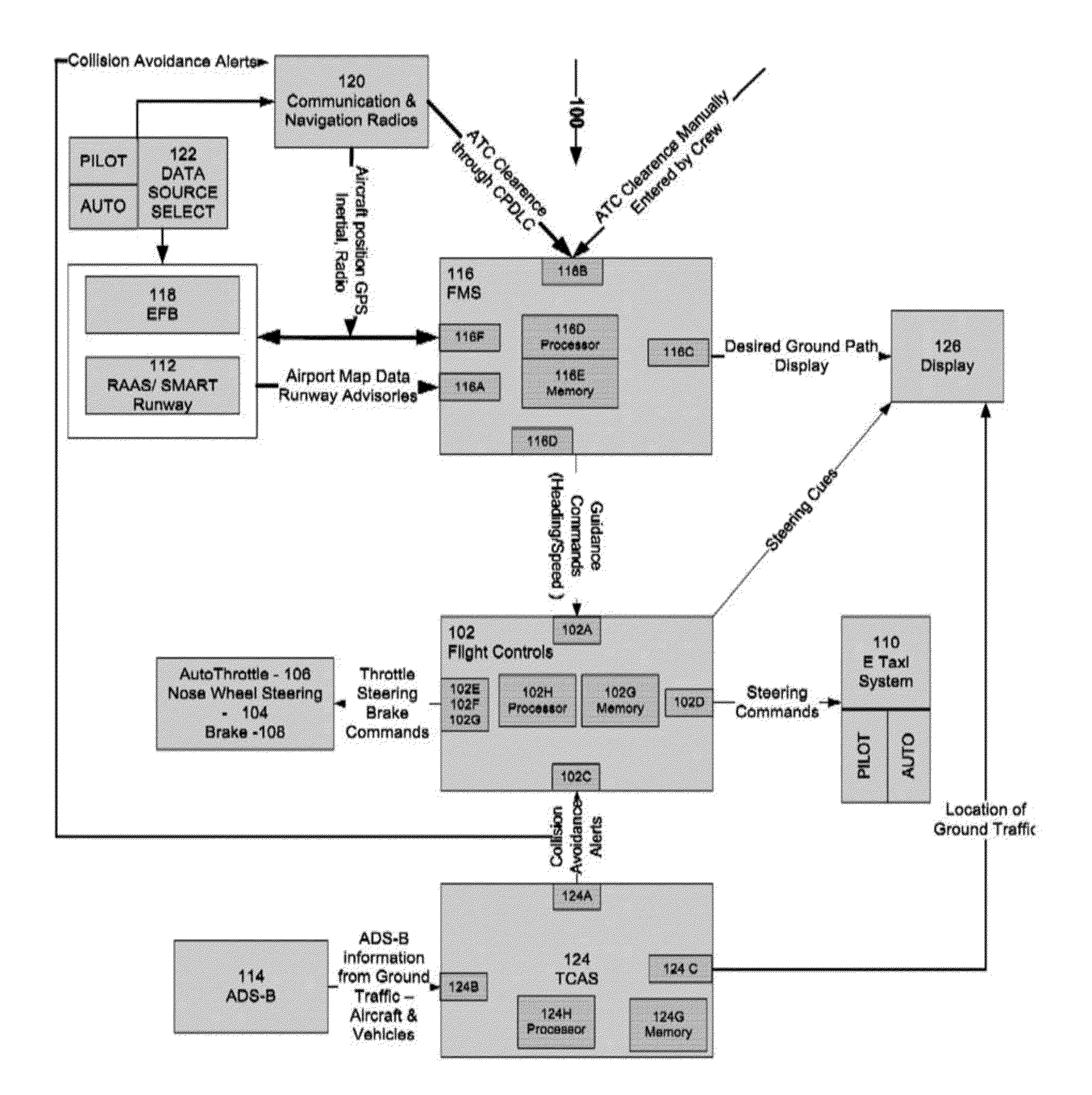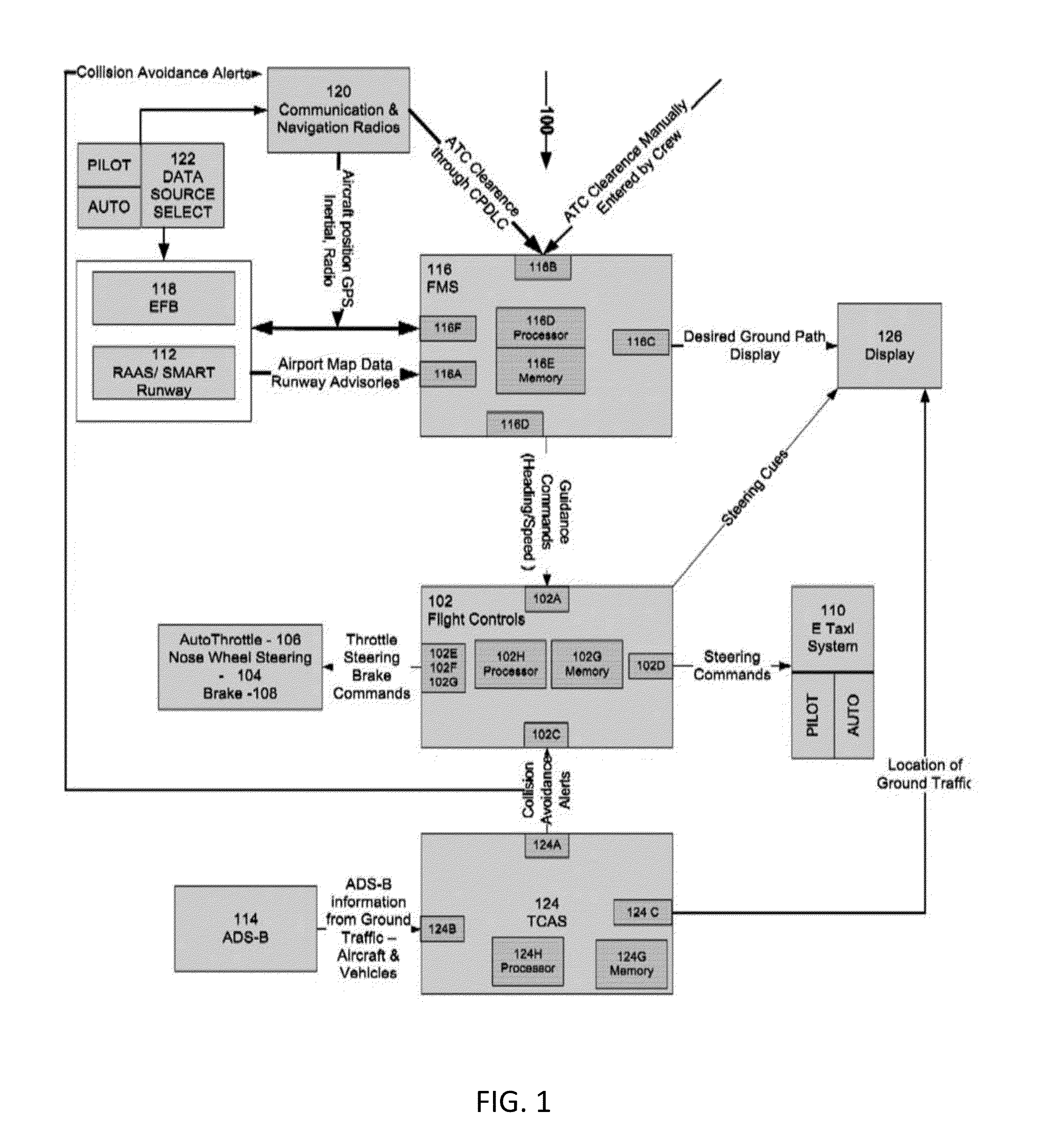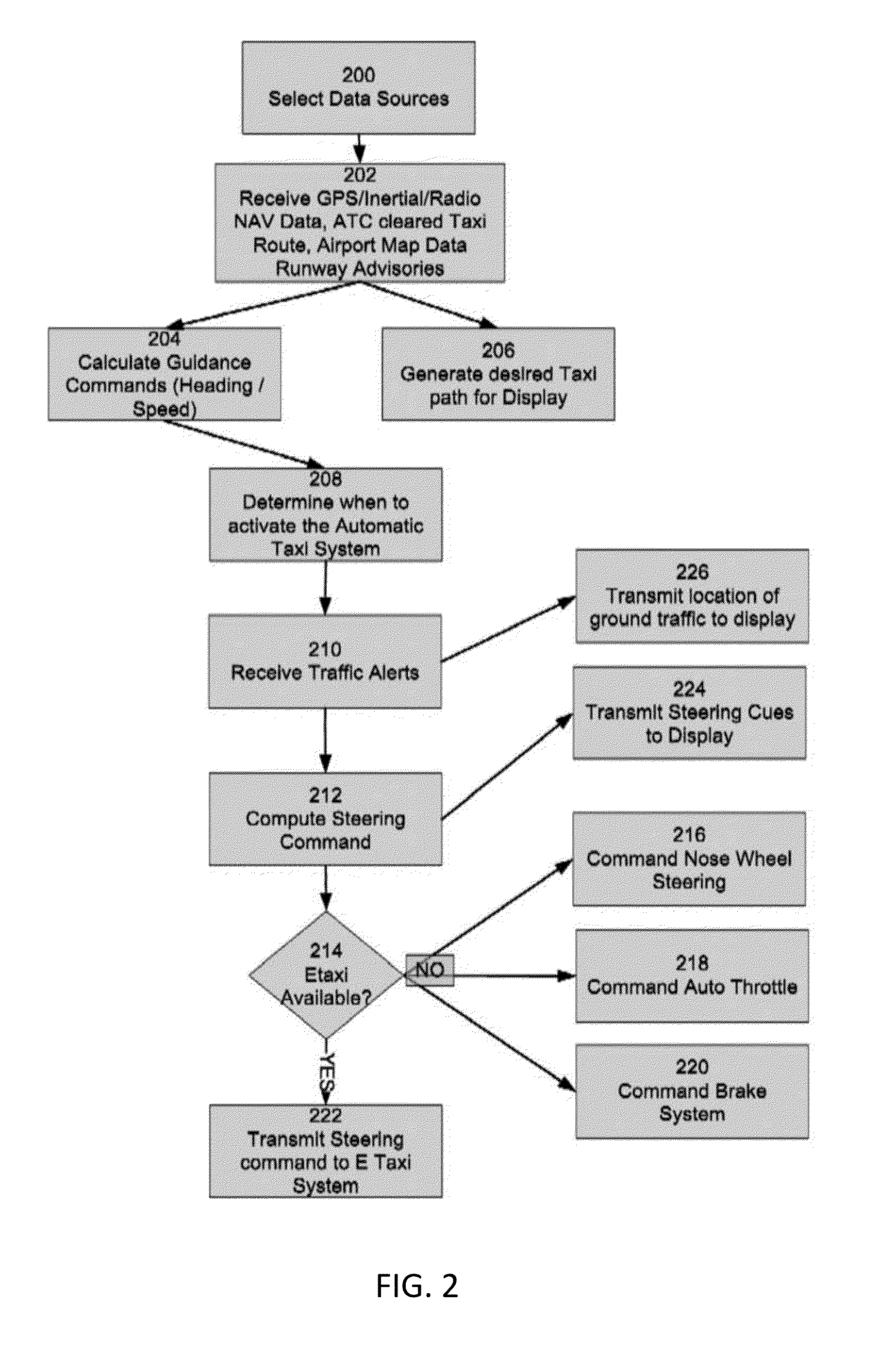Aircraft taxiing system
a taxiing system and aircraft technology, applied in the field of aircraft taxiing, can solve the problems of pilot distraction, large number of airport accidents, and increased fuel burn, and achieve the effects of safe taxiing, avoiding collisions and incursions, and safe taxiing
- Summary
- Abstract
- Description
- Claims
- Application Information
AI Technical Summary
Benefits of technology
Problems solved by technology
Method used
Image
Examples
Embodiment Construction
[0012]The following detailed description is of the best currently contemplated modes of carrying out exemplary embodiments of the invention. The description is not to be taken in a limiting sense, but is made merely for the purpose of illustrating the general principles of the invention, since the scope of the invention is best defined by the appended claims.
[0013]Various inventive features are described below that can each be used independently of one another or in combination with other features.
[0014]Broadly, embodiments of the present invention generally provide an aircraft taxiing system that may improve both ground safety and fuel efficiency. An aircraft's flight control system may be coupled to an electric taxi system or a combination of the auto throttle, nose wheel steering and braking systems and information received from air traffic control and other sources may allow the aircraft to automatically taxi from gate to runway and from runway to gate in a manner that reduces s...
PUM
 Login to View More
Login to View More Abstract
Description
Claims
Application Information
 Login to View More
Login to View More - R&D
- Intellectual Property
- Life Sciences
- Materials
- Tech Scout
- Unparalleled Data Quality
- Higher Quality Content
- 60% Fewer Hallucinations
Browse by: Latest US Patents, China's latest patents, Technical Efficacy Thesaurus, Application Domain, Technology Topic, Popular Technical Reports.
© 2025 PatSnap. All rights reserved.Legal|Privacy policy|Modern Slavery Act Transparency Statement|Sitemap|About US| Contact US: help@patsnap.com



